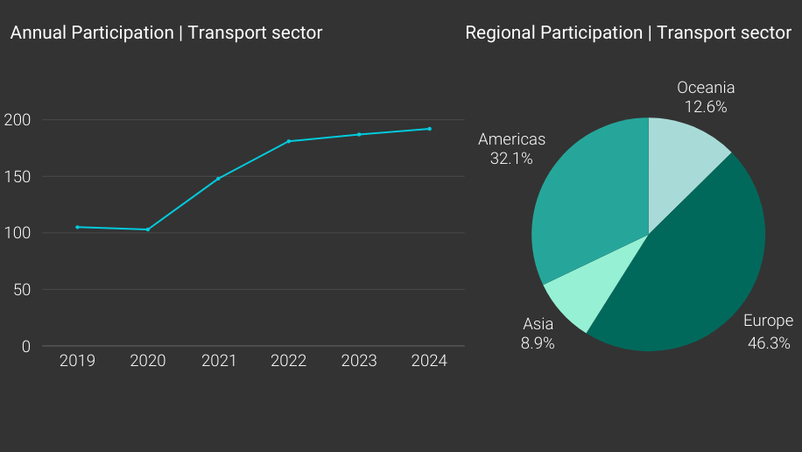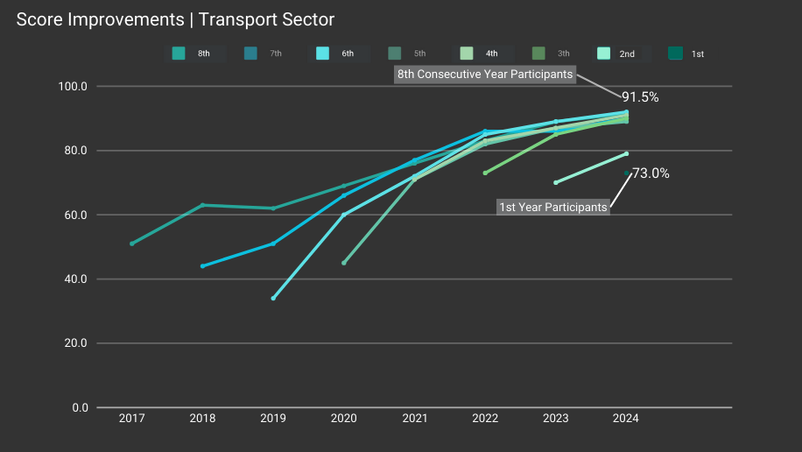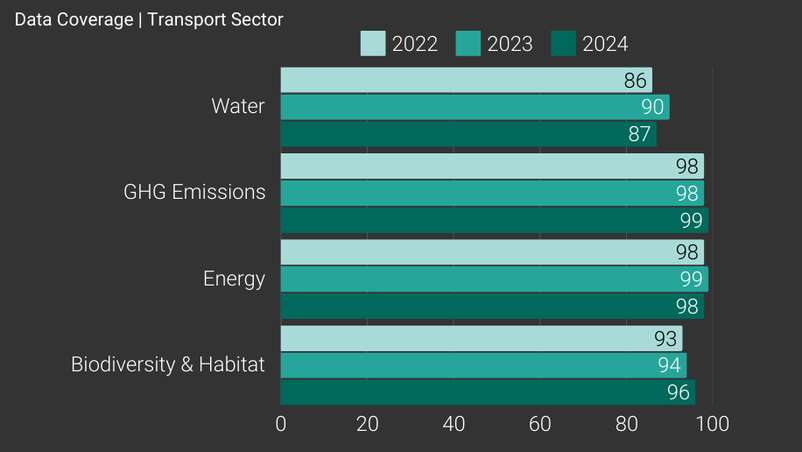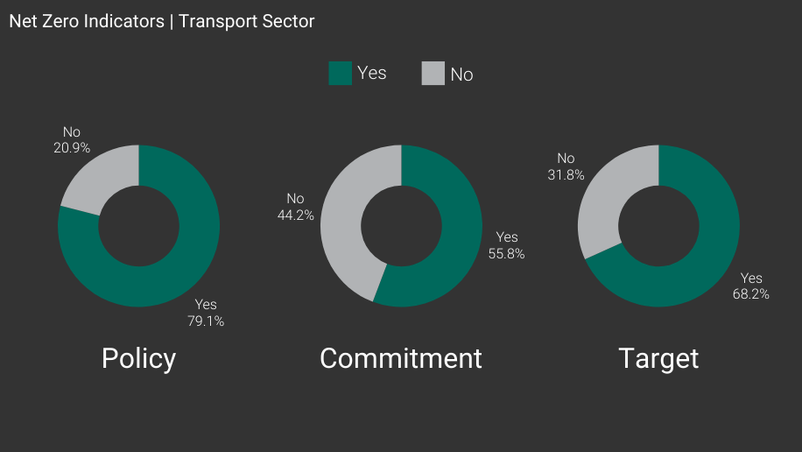GRESB Infrastructure Asset Assessment for transport
Through a globally-recognized assessment framework, GRESB enables transport assets-from airports and seaports to railways and logistics hubs-to measure their environmental and social performance and identify targeted improvements. The GRESB Infrastructure Assessments evaluate material performance indicators of transport companies and assets, such as energy efficiency, biodiversity management, climate risk resilience, and community engagement-elements essential to sustainable transport operations.
By participating in GRESB, transport infrastructure companies can systematically track, benchmark, and improve their sustainability performance while positioning themselves as leaders in the transition to sustainable infrastructure.
Three key benefits of GRESB for transport sector
Keep ahead of regulatory and stakeholder expectation
The transport sector is under increasing scrutiny to reduce its environmental impact. GRESB participation provides a structured approach to proactively measure and report on key sustainability metrics- such as emissions reductions, resource use, and social impact- ensuring compliance and building trust with regulators, communities, and other stakeholders.
Improve operational resilience and efficiency
Transport systems face growing threats from climate-related disasters, economic shifts, and urbanization pressures. The GRESB Assessments help to identify vulnerabilities and inefficiencies, from energy use to climate risk management. This enables asset managers and operators to improve resource use, reduce costs, and enhance resilience to physical and transition risks.
Access to capital and investor confidence
Trusted by over 150 institutional investor members, GRESB serves as the gold standard to investors worldwide, offering a common language for investors and managers to evaluate the ESG performance of infrastructure assets globally. Participation in GRESB demonstrates commitment to sustainability, fostering the trust needed to secure long-term investments and relationships. Transport operators reporting to GRESB are better positioned to attract sustainable finance by demonstrating their leadership in tackling their environmental impact and managing risks.
The annual GRESB Assessments serve as a compass, enabling URBICSA to identify missing policies and areas for improvement. A recent example of this is the development of a net-zero policy in response to GRESB guidance.
Francesc Carbó, General Manager & President of ESG Committee.
URBICSA
Benchmarking sustainability in transport

Leading sustainability benchmark in infrastructure
GRESB is the leading benchmark for infrastructure investments, encompassing 167 funds and 720 assets operating across 80 global markets. For the 2024 benchmark year, GRESB collected operational data from 192 transport assets in its infrastructure asset assessment.
The transport segment of the GRESB Infrastructure Benchmark is growing fast, jumping from 187 to 192 in the last year. This reflects the sector’s increased commitment and readiness to ESG transparency and performance improvements.

Avoid falling further behind
There are increasingly high demands placed on transport companies to reduce negative impacts on the environment and local communities. Starting with GRESB now demonstrates proactive effort to key stakeholders and can help improve your relative position before standardized ESG reporting becomes a universal expectation for transport operators and managers.
Early action shows a significant benefit as scores generally improve substantially after the first two years of reporting. Assets can quickly build momentum by identifying gaps, implementing targeted improvements, and adapting to the GRESB framework. On average, transport assets typically see 18 points increase in their GRESB Score by their third reporting year.

Driving performance through comprehensive metrics
High data coverage ensure capturing a complete and precise picture which is essential for effective ESG reporting. GRESB’s Infrastructure Asset Assessments facilitates detailed tracking of metrics like energy efficiency, social inclusion, operational resilience, and biodiversity impacts which are critical for ensuring comprehensive data coverage.
In 2024, transport assets reported nearly 100% coverage for energy and greenhouse gas (GHG) emissions on average, and 96% for biodiversity and habitat metrics. This high data coverage allows transportation projects to efficiently measure and take targeted action to reduce their environmental footprint.

Tracking progress toward net-zero alignment
Working towards net-zero emissions is becoming priority for renewable energy infrastructure worldwide. Grasping net zero expectations and demonstrating commitment is essential for the transport sector to ensure compliance with strict climate regulations. Assessing peer and sector performance helps in making informed decisions and setting targets that support the transition to sustainable transport solutions.
GRESB’s framework supports participants in systematically tracking and reporting emissions across all three scopes. Transport operators and managers are able to easily establish net zero targets, measure progress, compare peer performance and identify areas for improvement to align operations with global net-zero goals.
Join industry leaders driving change across infrastructure
Ready to learn more about the GRESB Infrastructure Assessments?
Have questions? Get answers.
"*" indicates required fields